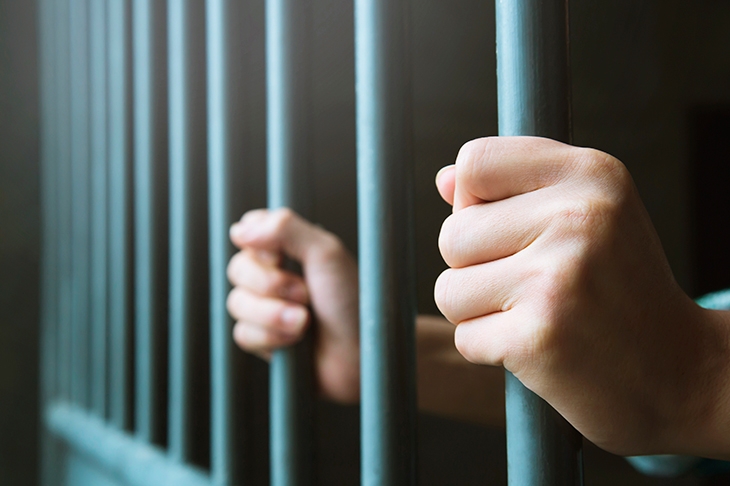At the end of October, just before I started as HM Chief Inspector of Prisons, the inspectorate and Ofsted visited Rainsbrook Secure Training Centre near Rugby. Rainsbrook was built by the Blair government to house the increasing numbers of children imprisoned as a result of policing targets and tough-on-crime policies and it was one of four centres contracted out to private providers. The great hope was that these better-funded centres would provide a more humane alternative to Young Offender Institutions.
Rainsbrook holds children aged mostly 15 to 18, but on our inspection we discovered that for their first two weeks, new arrivals were being locked in their cells for 23½ hours a day. They had no contact with other children and little interaction with staff, who dropped food off at their doors and took them out for short solitary periods in the exercise yard.
The centre managers claimed they were responding to Covid-19 advice from local health officials, but they had not thought through the risk to children, or bothered to devise any alternative strategies. Little consideration had been given to any vulnerable children, including one boy assessed by the centre as being a suicide risk. Other institutions we have visited since April have, in contrast to Rainsbrook, grouped new arrivals into bubbles, even if this means some will have to spend slightly longer in quarantine.

The Youth Custody Service, whose job is to monitor the centre, either had not noticed or did not see anything wrong with keeping children as young as 15 in solitary confinement. Within days of our visit, the situation at Rainsbrook had been remedied, but by then this appalling and unnecessary arrangement had been in place for seven months.
Rainsbrook is funded at around £160,000 a year for each of the 84 places, but at the time of the visit it was only half full. Even so, the centre had acted on only one of the 20 recommendations from its previous inspection in February. The latest report identified the ‘failure of leadership to consistently ensure children’s safety and wellbeing and to fully address deficiencies in their care’.
Since its opening, Rainsbrook has had a troubled existence. In 2004, 15-year-old Gareth Myatt was killed by positional asphyxia while being restrained. He weighed less than seven stone and was under five feet tall. Reports in recent years have described inexperienced staff being unwilling to deal with bad behaviour, high levels of bullying and violence, and inadequate education.
Other Secure Training Centres have had similar failings. Also in 2004, Adam Rickwood, 14, hanged himself in his cell, soon after being restrained by ill-trained Serco staff in the now closed Hassockfield STC in County Durham. In 2015 an undercover BBC reporter filmed staff at G4S-run Medway centre abusing children, using excessive force and covering up bad practice.
In August last year, an HMIP inspection of Feltham Young Offender Institution led to an urgent notification to improve being sent to the Secretary of State for Justice, citing a breakdown of discipline, poor leadership and record levels of assault, self-harm and physical restraint. On the day the report came out, I met David Ramsbotham, chief inspector between 1995 and 2001. He told me not to read it until I looked at the one he had written in 1997. Apart from a change in the font and a few minor details, the reports were interchangeable, with a long list of failures to provide safe care and a decent education for this troubled group of boys.
Emphasis on control, punishment and containment of children in custody continues to dominate
The emphasis on control, punishment and containment of children in custody continues to dominate any attempt to rehabilitate or educate. Almost all these children will eventually be released, with most serving sentences of fewer than two years. Without the right help they will return to offending, thereby creating more victims and harming themselves, their communities and their families. This will lead to yet more taxpayers’ money being used to fund health, social care, the police, courts and prisons.
There are a diminishing number of children in custody, currently 600 compared with up to 3,000 in the Blair years, but the re-offending rate for this group is the highest seen anywhere in the justice system. More than 60 per cent commit an offence within a year of being released.
In my 2015 review of the Youth Justice System, I recommended the creation of a new form of custody — Secure Schools — to replace the existing estate. These would be run by established schools, trusts and other education providers, rather than by either the state or the contract-bound private sector. I proposed that Secure Schools should be just that, schools with walls, rather than prisons that attempt but fail to educate.
Two years ago Oasis, a charity that runs many academies in the most challenging inner-city locations, was selected to open the first Secure School on the site of Medway STC, but despite the support of the many ministers who have passed through the Ministry of Justice, progress has been painfully slow. This new academy is scheduled to open in 2022, seven years after it was first proposed. Contrast this with the Department for Education, which will have opened hundreds of free schools in the same period. The MoJ must be prepared to reduce its tortuous bureaucracy and resist the controlling instincts of the prison service. It must give Oasis the freedom to get on with the plan to deliver good discipline, bespoke education and therapeutic care.
Children who end up in custody often have learning difficulties or mental health problems. They are often from broken families or have been brought up in care, and have suffered abuse and exploitation. Yes, some of them have committed serious and shocking crimes, but if we want them to go on to be successful adults and to take care of their own children, we must treat them differently. If we want these children to change, we have to start giving them what they need, not what we may feel they deserve.






Comments